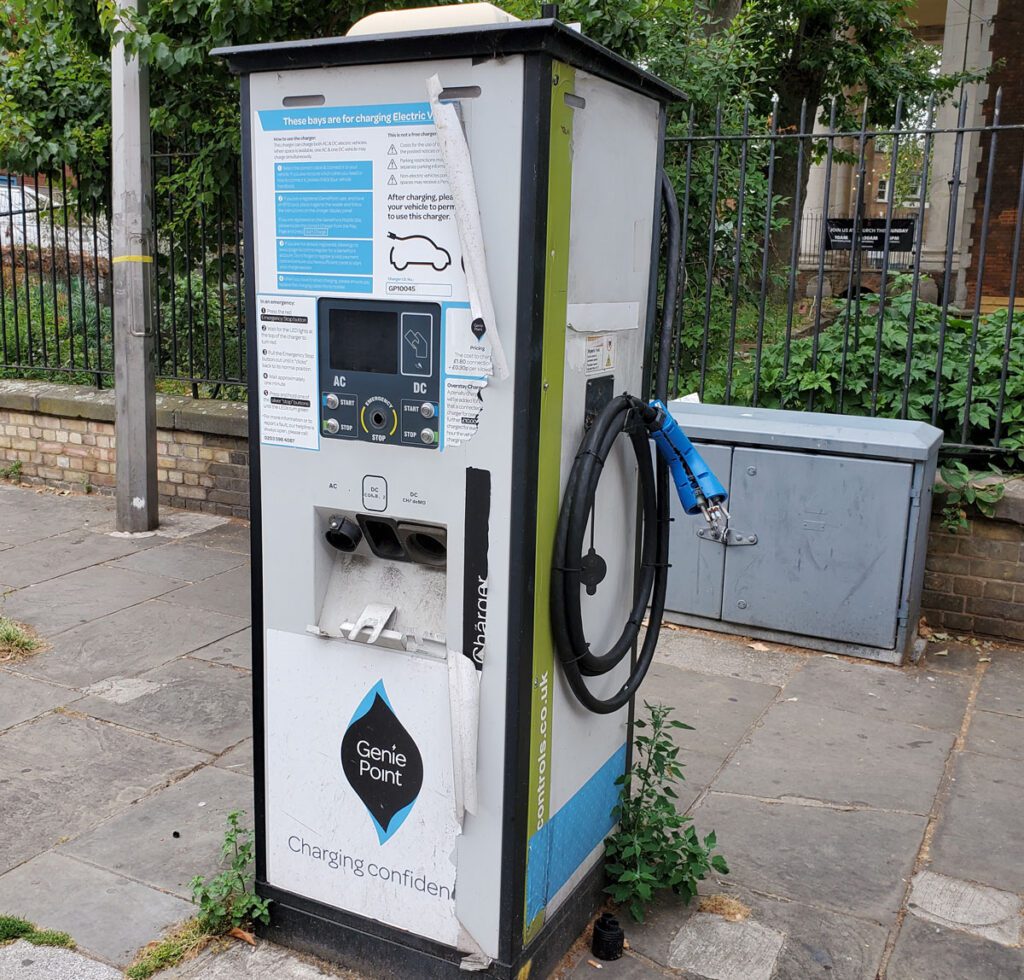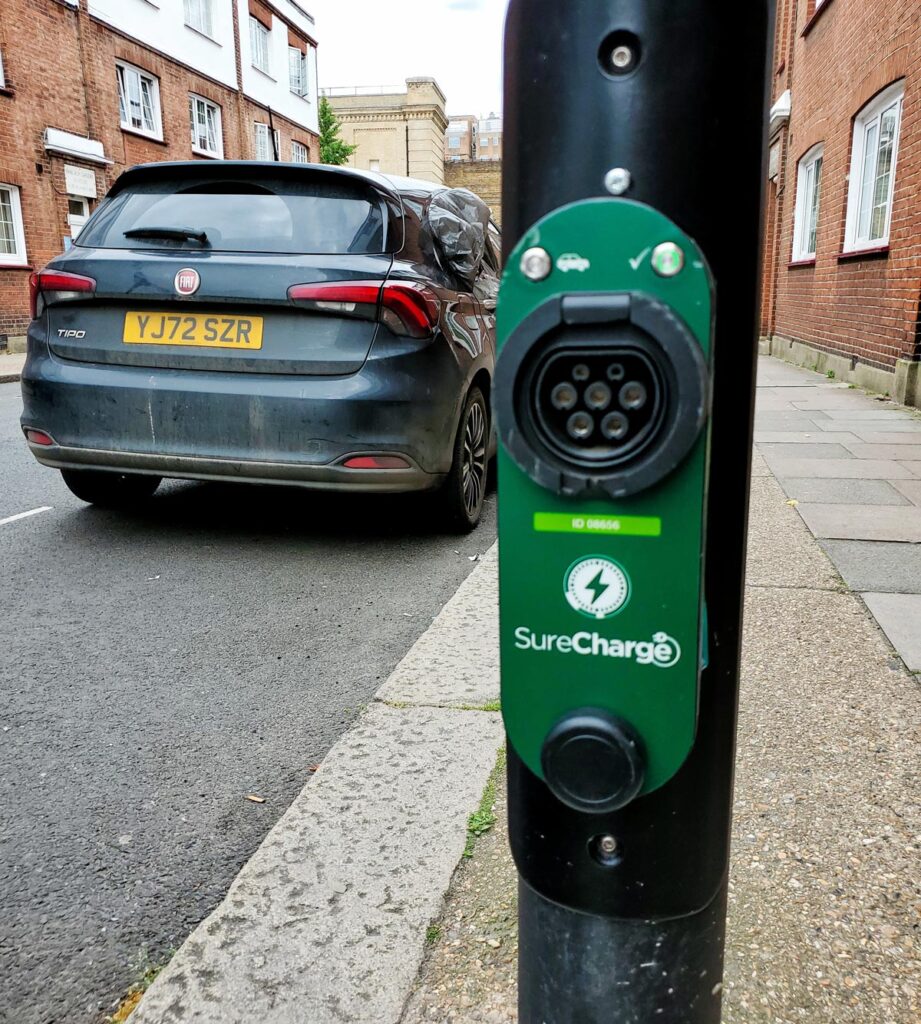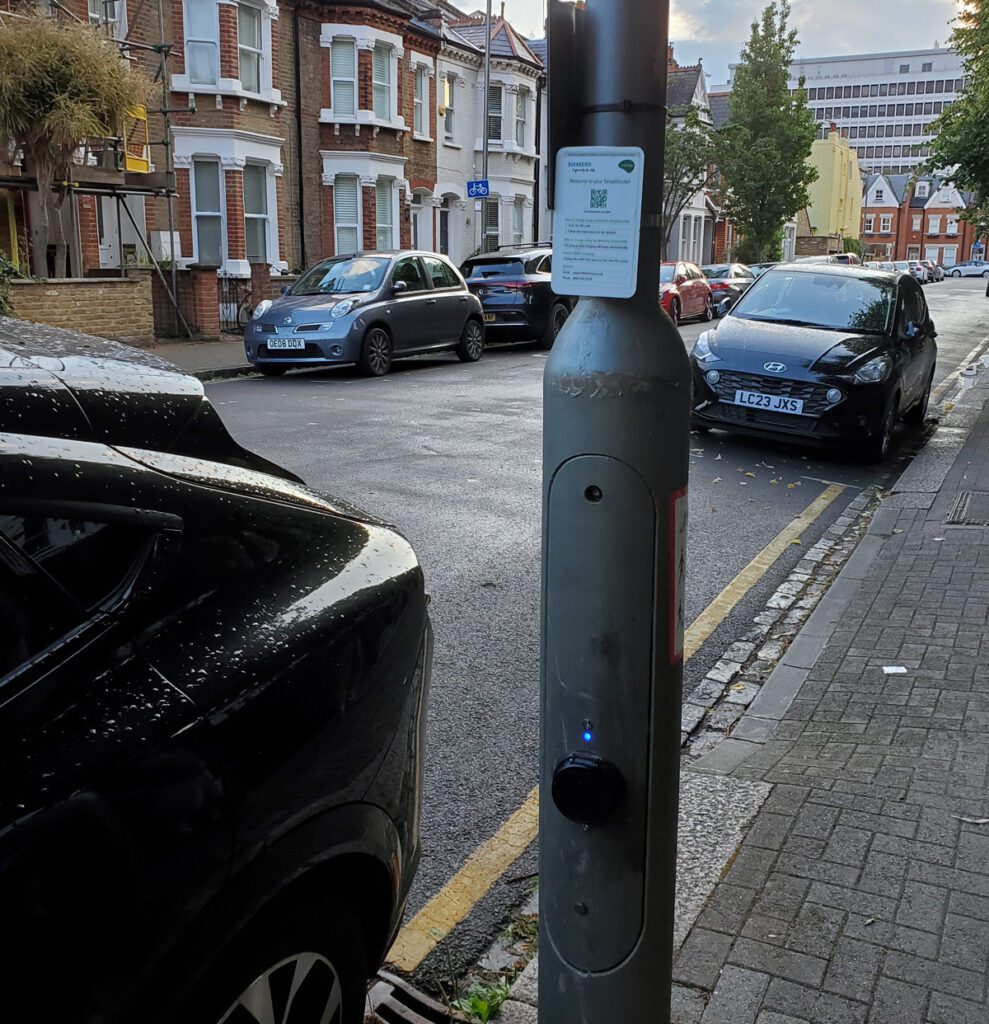
[ad_1]
Touring in Europe (and close by international locations) today is in some methods like touring to the longer term. London has been an electrification chief for some years, and the streetscape this summer time seems way more electrical than it did on my final go to 4 years in the past.
I noticed no proof of the “hollowing out” of downtown districts that has hit many US cities within the wake of the work-from-home development. Workplace towers in The Metropolis and Docklands could also be combating low occupancy charges, however London’s purchasing and nightlife hotspots stay as jam-packed as ever.
Oxford Avenue is an extended string of malls with an enormous transport artery (buses, taxis and pedicabs solely) operating down the center. Whereas ready for my spouse and sister-in-law to complete purchasing, I made an off-the-cuff survey of London bus powertrains. On these specific routes, hybrid, hydrogen, battery-electric and old style stinkpot buses had been operating, in roughly equal proportions.
London has been deploying electrical buses since at the least 2015. Whereas the bold targets set at the moment weren’t met, the town has made nice strides in electrifying its monumental fleet. Based on an audit from March 2023, there are 3,835 hybrid buses, 950 battery-electric buses, and 20 hydrogen gasoline cell buses, out of a complete bus fleet of 8,643. That makes round 56% of the bus fleet zero-emission, and 100% of the fleet meets Euro VI emission requirements.
After observing the seedy leisure facilities of Soho, we took an Uber to a jazz membership. Our driver, a younger Turkish gentleman, instructed us he loves his Hyundai Ioniq. His earlier automobile was a Kia Niro EV, and he was fairly educated about EVs. His Ioniq has a variety barely over 200 miles, which he stated was lots for a day of stop-and-go metropolis driving. When he will get house at night time, he plugs right into a lamppost charger for a sluggish cost, and his battery is topped up the subsequent morning. A nightly cost prices him about 10 kilos. (Driving 200 miles on petrol would price round 32 kilos, or $40, at present costs.)
The petrol financial savings are simply a part of the story. Along with its Congestion Zone, London now has an Extremely-low Emissions Zone (ULEZ), during which carbon-emitting automobiles are topic to charges. EVs are exempt from each the Congestion Zone and ULEZ charges, which add as much as 27.50 quid ($34) per day.
The large price financial savings clarify why a big and quickly rising proportion of the town’s taxis and rideshare automobiles are electrical. London’s iconic black cabs began their journey to electrification in 2016, and now plug-in cabs outnumber old style diesel taxis on the capital’s streets.
The London EV Firm (LEVC), a subsidiary of Chinese language automaker Geely, makes a plug-in hybrid taxi known as the TX5. The LEVC TX provides 78 miles of electrical vary. It contains a 33 kWh LG Chem battery pack and a 110 kW (148 hp) electrical motor that drives the rear wheels. The TX drives in electrical mode on a regular basis, and the battery is recharged by an 81 hp 1.5-liter three-cylinder petrol engine.
LEVC began promoting the TX in 2018, and it now represents greater than 40 % of all of the black cabs in London—round 6,000 ply the town’s streets, squares, terraces, crescents, courts, circuses and closes. (The TX additionally can also be in operation in Germany and Israel.)



Personal EVs are additionally widespread in London—I noticed a great deal of Teslas, various Ford Mustang Mach-Es, and hundreds of Hyundais and Kias. At first, Londoners had been a little bit sluggish to embrace EVs, as a result of Plight of the Drivewayless. As in lots of dense cities, many automobile homeowners don’t have any driveways, and even assigned parking areas—they park on the road, and don’t have any risk of putting in house chargers. For a number of years, the town was a laboratory for city charging options—some intelligent, some charmingly low-tech, and a few, frankly, loopy. The answer (as drivers in Oslo and Amsterdam have additionally discovered) turned out to be fairly easy—heaps and many curbside chargers. Avenue chargers of all manufacturers and kind elements are to be seen everywhere in the metropolis. Many are put in in lampposts—an ingenious answer that minimizes sidewalk litter and takes benefit of present electrical service. One DC quick charger on a quiet aspect road offered an object lesson within the significance of correct siting—yobs had ripped out the cables for the copper, and vandalized the cupboard for good measure.
No matter chances are you’ll take into consideration Boris and the remainder of the crew who introduced us Brexit, it may’t be denied that on their watch, London has made nice strides in transit electrification (different components of The Isles are much less charged). Londoners have numerous inexperienced transit choices, from EVs to bike lanes to the town’s sprawling, trendy public transport networks. Alas, the constructive momentum could not final. On the identical day that the UK reported its hottest June in historical past, the Tory authorities revealed plans to zero out the UK’s deliberate funding for international local weather applications. Because the nation tries to cope with some unlucky financial realities, EV-friendly home applications could quickly face the price range ax as properly.
[ad_2]